Misinformation about gutter cleaning can lead to needless home damage. We’ve distilled key facts from fiction in ‘Gutter Cleaning Myths Debunked: What Every Homeowner Should Know’ to spotlight the essentials of proper gutter maintenance. Dive in, as we disprove the myths and unveil the necessary steps to safeguard your home.
Key Takeaways
Regular gutter cleaning is essential for preventing water damage, maintaining home value, and avoiding costly repairs, debunking myths that deem it unnecessary, easy for DIY, or obsolete with gutter guards.
Professional gutter cleaning services should be researched thoroughly with attention to their reputation, reviews, and response to criticism, and providers must be verified for insurance and licensing.
Recognizing signs that gutters need maintenance, such as overflowing water, sagging, or peeling paint, is crucial; homeowners should follow safety tips such as using ladders correctly, wearing protective gear, and being aware of their surroundings.
Common Gutter Cleaning Misconceptions
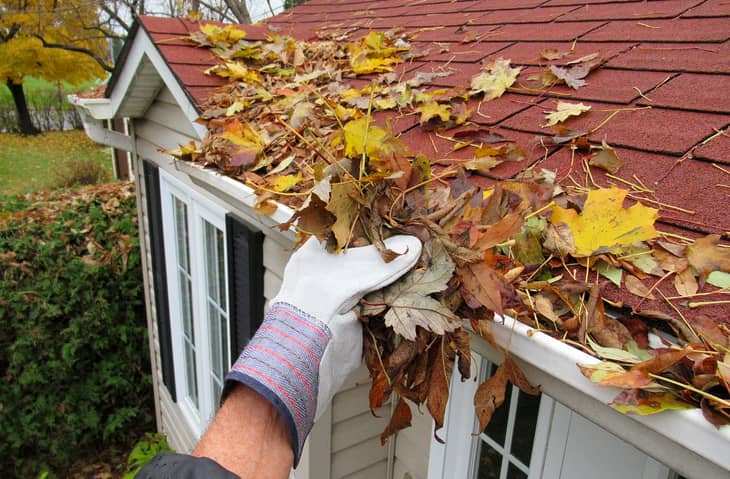
Gutter cleaning, while not the most glamorous task, is essential for the upkeep of your home. However, there are some common misconceptions about this task that might make you think twice about its importance. These misconceptions can lead homeowners to neglect their gutters, potentially causing serious harm to their homes and wallets.
We’ll debunk three widespread gutter cleaning myths in this section. These myths falsely claim that cleaning isn’t necessary, DIY cleaning is safe and easy, and gutter guards eliminate the need for cleaning. Time to set the record straight.
Myth: Gutter Cleaning Isn’t Necessary
First, we address the myth that gutter cleaning isn’t necessary. Bucking this belief, the reality is that gutter cleaning is crucial for home maintenance. Neglecting this task can lead to severe consequences, such as water damage, a decrease in home value, and expensive repair bills.
Gutters are designed to channel rainwater away from your home’s foundation. When they’re clogged, gutters overflow, damaging your roof, siding, and foundation. This can result in unsightly water stains and, in severe cases, flooding in your basement or crawl space. Regular gutter cleaning can prevent these issues, protecting your home and maintaining its value by ensuring that cleaned gutters don’t allow clogged gutters to cause any damage.
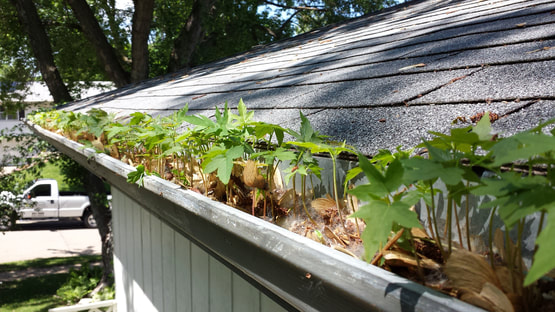
Myth: DIY Gutter Cleaning Is Easy and Safe
We confront the second myth next, which wrongly implies that DIY gutter cleaning is an easy and risk-free endeavor. However, this is far from the truth. Gutter cleaning is a task that requires certain skills and precautions to be taken to ensure safety.
Climbing a ladder to clean your gutters can be dangerous, especially for those who aren’t accustomed to working at heights. Accidents can occur, leading to severe injuries. There’s also the risk of damaging your gutters or roof in the process, which can void your home warranty. It is, therefore, often best to leave this task to the professionals.
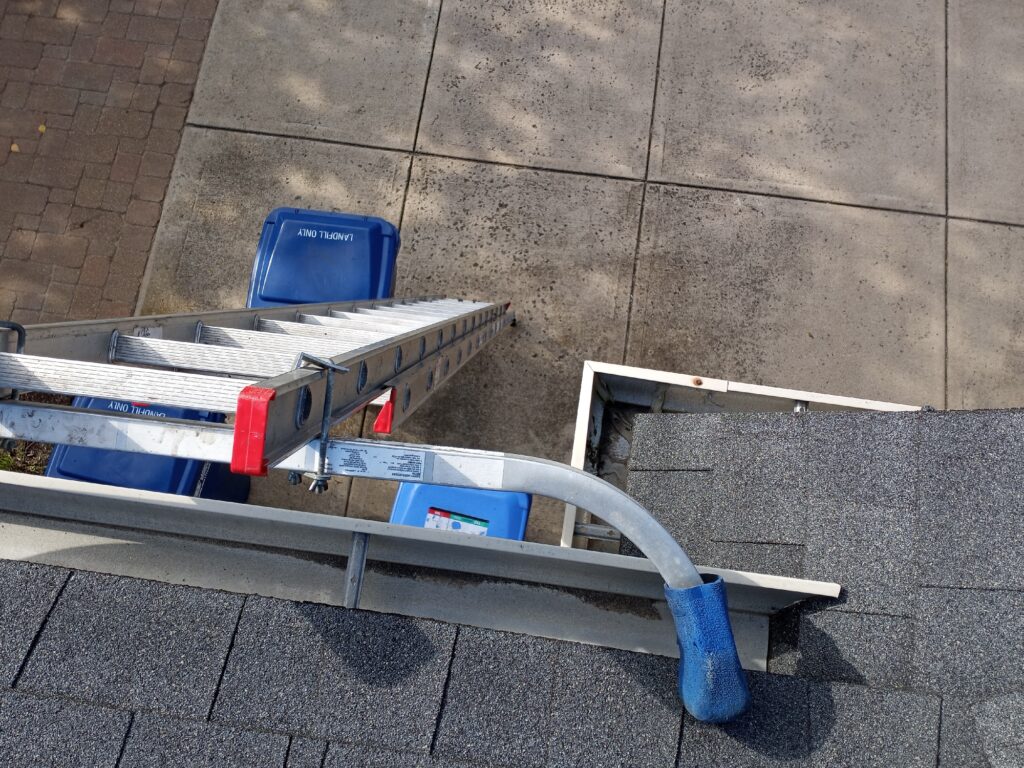
Myth: Gutter Guards Eliminate the Need for Cleaning
The third myth we aim to dispel revolves around the belief that installing gutter guards eliminates the need for cleaning. While gutter guards can reduce the debris buildup in your gutters, they don’t remove the need for cleaning.
Even with gutter guards installed, it’s still necessary to perform regular maintenance and cleaning. Gutter guards can’t block all debris, and smaller particles can still accumulate over time, causing blockages. To prevent this, it’s a good idea to install gutter guards. Regular cleaning ensures that your gutters remain clear and function properly, regardless of whether you have gutter guards installed or not.
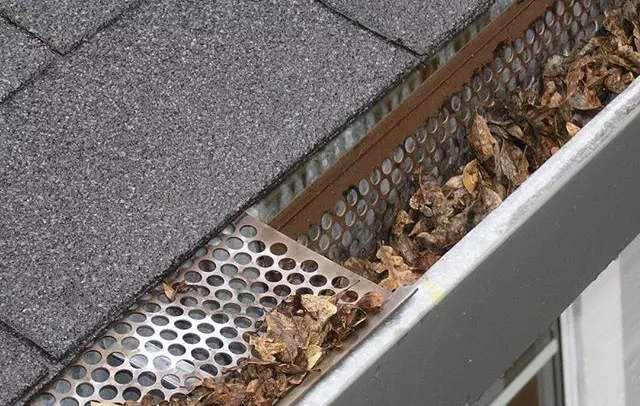
The Importance of Regular Gutter Cleaning
Having debunked common gutter cleaning myths, we now turn our attention to the significance of regular gutter cleaning. Regular maintenance of your gutters is crucial for preventing water damage, maintaining your home’s value, and avoiding costly repairs.
Subsequent subsections will delve deeper into the ways regular gutter cleaning aids in preventing water damage, upholding your home’s value, and averting costly repairs.
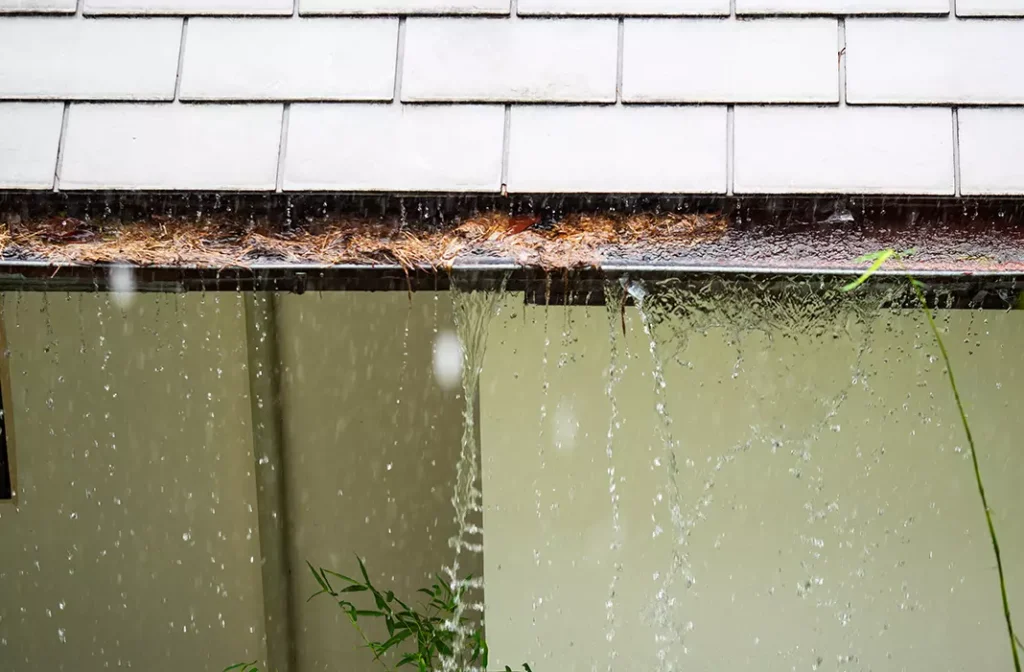
Preventing Water Damage
A well-maintained gutter system is your home’s first line of defense against water damage. Gutters channel rainwater away from your home, preventing it from seeping into your foundation, walls, and basement.
However, when gutters are clogged, water can’t flow freely and instead overflows, potentially damaging your roof, siding, and foundation. In severe cases, this can lead to basement flooding and the growth of mold and mildew. Regular gutter cleaning, including downspout cleaning, can prevent these issues by ensuring that water is properly channeled away from your home.
Maintaining Home Value
Beyond preventing water damage, regular gutter cleaning can also help maintain and potentially increase your home’s value. When gutters are clean and functioning properly, they prevent damage that can detract from your home’s appearance and structural integrity.
Regular gutter cleaning can prevent roof leaks, foundational damage, and other structural issues that can detract from your home’s value and curb appeal. It also shows potential buyers that you’ve taken good care of your home, potentially making your property more attractive on the market.
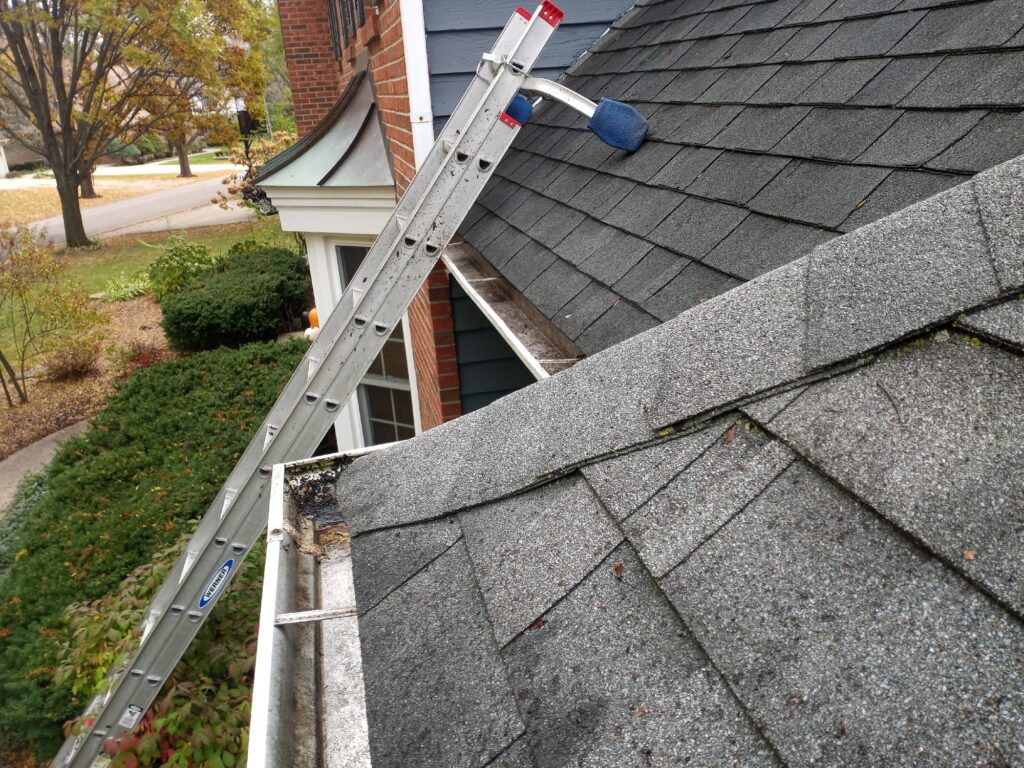
Avoiding Costly Repairs
Lastly, regular gutter maintenance, including gutter cleaning, can help you avoid costly repairs, such as gutter replacement. Ignoring your clean gutters can lead to serious issues over time, such as water damage, roof leaks, and even foundational problems.
By regularly cleaning your gutters, you can:
Identify and address minor issues before they become significant problems
Save a considerable amount of money in the long run
Extend the lifespan of your gutters.
Tips for Choosing a Gutter Cleaning Service
We’ve underscored the importance of regular gutter cleaning, but what factors should be weighed when selecting a gutter cleaning service? Choosing the right service is crucial to ensure that your gutters are properly maintained and that the work is done safely.
The following subsections offer guidance on how to research and read reviews, verify insurance and licensing, and assess the service provider’s experience and expertise.
Research and Reviews
One of the first steps in choosing a gutter cleaning service is conducting thorough research and reading reviews. This can give you insight into the company’s reputation and the quality of their work.
Look for reviews on various platforms, such as the company’s website, social media pages, and other online review sites. Pay close attention to any negative reviews and see how the company responds. This can give you an idea of their customer service and commitment to resolving issues.
Insurance and Licensing
Another important factor to consider when choosing a gutter cleaning service is whether the professional gutter cleaners are insured and licensed. This protects you and your property in case of accidents or damage during the cleaning process.
Before hiring a service, ask for proof of their insurance and licensing. This not only protects you but also shows that the company is professional and complies with industry regulations.
Experience and Expertise
Lastly, consider the service’s experience and expertise. A company with several years of experience is likely to have the skills and knowledge to do the job properly and safely.
Ask about the company’s training and certification programs, and whether their staff has undergone apprenticeship programs. This will ensure that they have the right skills and knowledge to clean and maintain your gutters effectively.
Also read: How Regular Cleaning Can Extend the Life of Your Solar Panels
Signs Your Gutters Need Cleaning or Repair
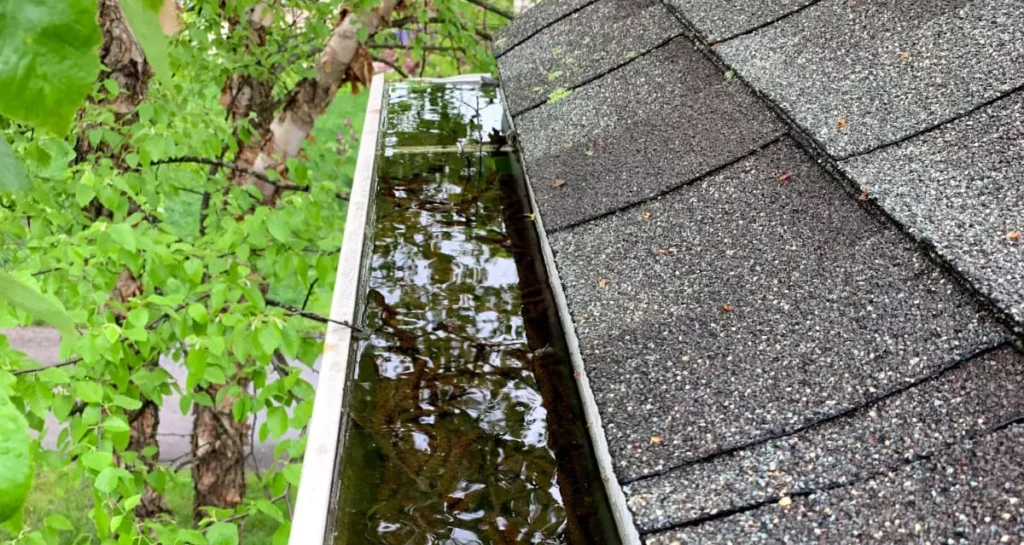
Recognizing when your gutters require cleaning or repair can spare you significant hassle and expense. But which signs should prompt action?
We’ll explore the most prevalent signs indicating your gutters need attention, such as overflowing water, sagging gutters, and peeling paint or rotting wood.
Overflowing Water
One of the most obvious signs that your gutters need cleaning or repair is overflowing water. If water is spilling over the sides of your gutters during a rainstorm, it’s likely that they’re clogged and need to be cleaned.
Overflowing gutters can cause significant damage to your home, including water damage to your roof, siding, and foundation. In severe cases, it can even lead to flooding in your basement or crawl space. Regular gutter cleaning can prevent these issues and ensure that your gutters are functioning properly.
Sagging Gutters
Another sign that your gutters need attention is sagging. If your gutters are sagging or pulling away from your house, it’s likely that they’re clogged with debris and are too heavy.
Not only does this look unsightly, but it can also cause significant damage to your home. The excess weight can pull the gutters away from your house, damaging your roof and siding. Regular gutter cleaning can prevent this issue and ensure that your gutters remain secure.
Peeling Paint and Rotting Wood
Finally, if you notice peeling paint or rotting wood near your gutters, this can be a sign of water damage caused by clogged or malfunctioning gutters.
Water that overflows from clogged gutters can seep into your home, causing damage to your siding and potentially leading to mold and mildew growth. By regularly cleaning your gutters and addressing any issues early, you can prevent this damage and keep your home looking its best.
Gutter Cleaning Safety Tips
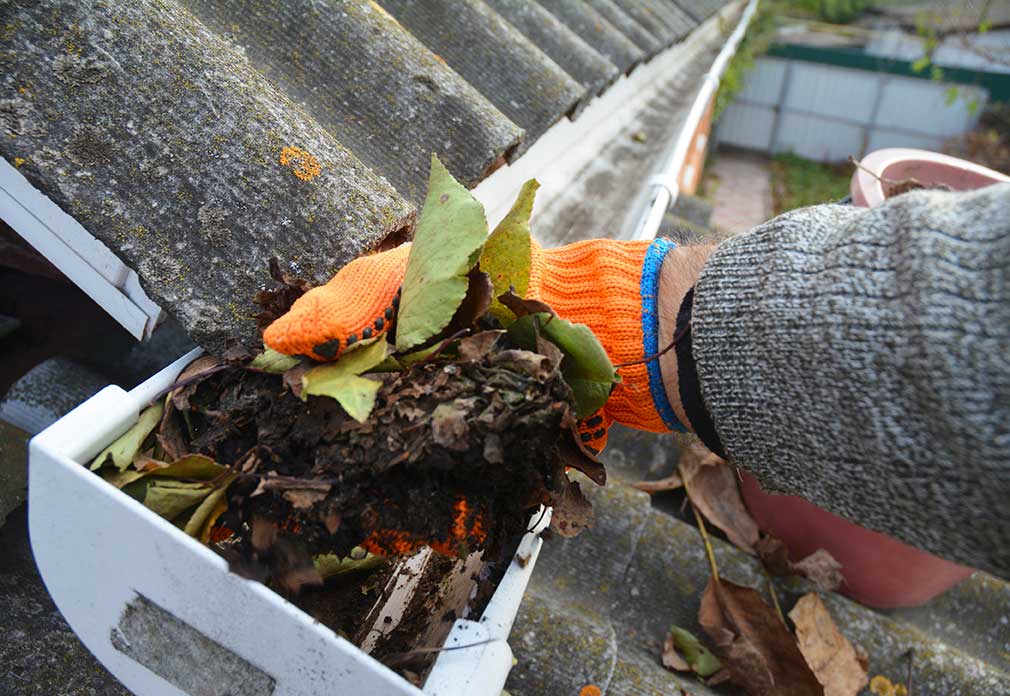
Gutter cleaning can pose risks if not executed correctly. Potential hazards range from ladder falls and cuts from sharp objects to the more severe risk of electrocution from proximate power lines.
The upcoming subsections offer safety advice for cleaning gutters, emphasizing the importance of proper ladder use, protective gear, and awareness of your surroundings.
Proper Ladder Use
One of the most important safety tips when cleaning your gutters is proper ladder use. Using a sturdy ladder and ensuring it is set up correctly can prevent accidents and injuries.
When setting up your ladder, follow these safety guidelines:
Make sure it is on firm, level ground.
Keep your body centered between the side rails at all times, and never lean over the sides.
If you’re using an extension ladder, ensure it extends at least 3 feet above the roof edge for safe and easy access.
Protective Gear
Another crucial safety tip is to wear the right protective gear. This includes sturdy gloves to protect your hands from sharp objects, safety goggles or glasses to protect your eyes, and non-slip shoes to prevent falls.
Additionally, consider wearing a hard hat to protect your head from any falling debris. If you’re working in a dusty area or if there’s a lot of pollen or mold in your gutters, consider wearing a face mask as well.
Awareness of Surroundings
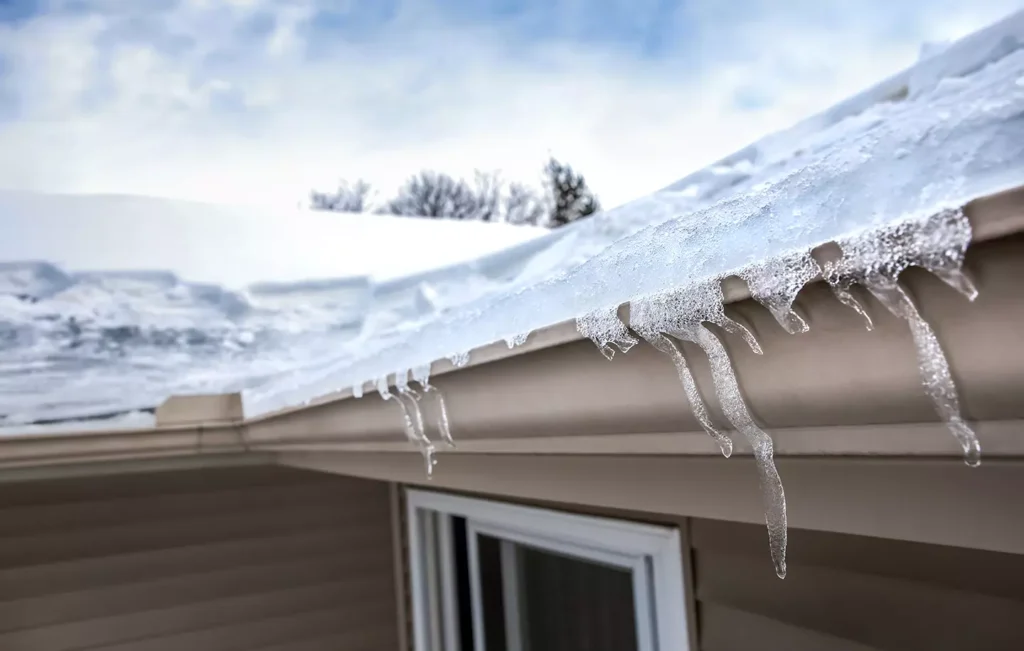
Finally, always be aware of your surroundings when cleaning your gutters. This includes being aware of power lines, tree branches, and other potential hazards. If you’re working near power lines, use a wooden or fiberglass ladder instead of a metal one to avoid the risk of electrocution.
Also, be aware of the ground below you. It should be firm and level. If you’re working on a slope, use a ladder with adjustable legs for stability. And always let someone know you’re going to be working on the roof, so they can check on you periodically and be available in case of an emergency.
Summary
In conclusion, gutter cleaning is a crucial component of home maintenance that should not be overlooked. Regular cleaning can prevent water damage, maintain your home’s value, and save you from costly repairs. However, it’s important to remember that gutter cleaning can be a risky task if not done properly. Hiring a reputable gutter cleaning service can ensure that the job is done safely and effectively.
Remember to always use a sturdy ladder, wear protective gear, and be aware of your surroundings when cleaning your gutters. And if you notice signs like overflowing water, sagging gutters, peeling paint, or rotting wood, it might be time to call in the professionals. Protect your home and your wallet by keeping your gutters clean and well-maintained.
Frequently Asked Questions
Is it worth it to clean your own gutters?
Yes, it is worth cleaning your own gutters as it reduces costs associated with potential damage to your roof and foundation in the long run.
Should I tip the guy who cleans my gutters?
Tipping the guy who cleans your gutters is not expected, but it can be a nice gesture if you are satisfied with their work. If you do decide to tip, $10 to $20 per cleaner is a typical amount, and if the job is more challenging or takes more time, you can tip a little more.
What happens if you never clean your gutters?
Neglecting to clean your gutters can result in various expensive issues, including shingle damage, roof leaks, and interior water damage. It’s crucial to clean your gutters regularly to prevent these problems.
What is the average cost of gutter cleaning in my area?
The average professional gutter cleaning cost in Chicago area can range from $80 to $200 for a single-story home and $150 to $400 for a two-story or multi-level home, depending on factors like home size and roof pitch.
How often should I clean my gutters?
It is recommended to clean your gutters at least twice a year, but if you have many trees around your house, you may need to clean them every three months. Regular maintenance is key to preventing clogs and damage to your gutters.